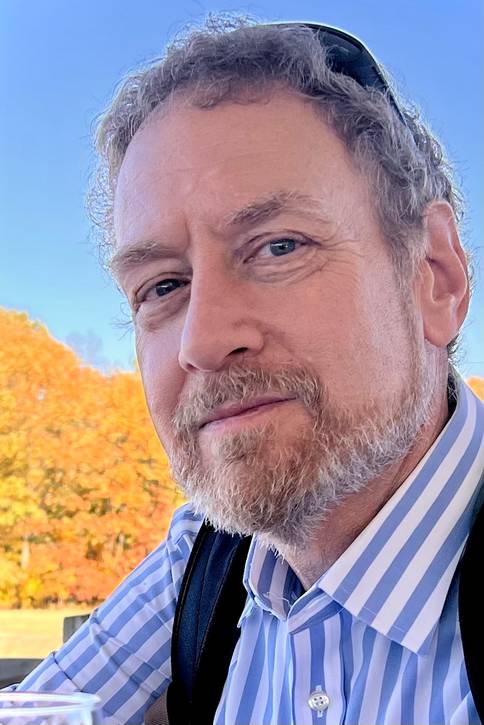Hitting the right note: CSFF musicians transform the silent classics
Thanks to the Cleveland Silent Film Festival & Colloquium (CSFF), Northeast Ohio moviegoers are discovering something that was common knowledge a century ago, but hardly anyone knows today:
Watching a film with live music isn’t just fun, it can be positively electrifying.
 Cleveland Silent Film FestivalThat’s what inspired CSFF executive director Emily Laurance to create the festival in 2022.
Cleveland Silent Film FestivalThat’s what inspired CSFF executive director Emily Laurance to create the festival in 2022.
An accomplished musician herself, Laurance became a fan of silent films with live music after she saw such presentations. When she moved to Cleveland several years ago, she became determined to bring that experience to the area, so she founded the CSFF.
Audience reaction to the festival was enthusiastic.
“Loved the movie and the music!” one attendee wrote on the feedback card. “This is an outstanding addition to the Cleveland arts scene,” said another.
CSFF’s audiences have grown over the past four years, and it’s seen solid repeat business—an indication that viewers enjoy the experience.
The CSFF runs year-round, thanks to a free monthly series at the main Cleveland Public Library main branch on Superior Avenue in downtown Cleveland, as well as recurring screenings at other venues, including the West Shore Unitarian Universalist Church in Rocky River.
In fact, the festival’s next screening, the 1925 horror comedy “The Monster,” starring Lon Chaney, will be held at West Shore on Sunday, Oct. 26 at 7 p.m. as part of the West Shore Silent Film Series. West Shore music director and organist David Blazer will accompany the film on the pipe organ.
This year, the CSFF ran its main fall series over the first two weeks in September, with showings at the Cleveland Museum of Art (CMA) and the Cleveland Institute of Art’s Cinematheque. The selections spanned a range of film and musical genres that included both crowd-pleasing classics and rarities.
The fall series kicked off with the 1925 “The Phantom of the Opera,” accompanied by an 18-piece ensemble of local musicians, led by Joseph Rubin, leader of North Canton-based American Musical Productions. Other titles included Ernst Lubitsch’s adaptation of “Lady Windermere’s Fan” and Buster Keaton’s “Go West”—both with local musicians led by Rodney Sauer, visiting silent film music specialist and music director of the Mont Alto Motion Picture Orchestra, and a pair of surrealist sci-fi shorts from French writer, director, and producer René Clair.
.jpg) Composer Philip Carli and Mont Alto Motion Picture Orchestra director Rodney Sauer.The 2025 CSFF wrapped up with a screening of F.W. Murnau’s “Faust” at Cinematheque, with a live score by The Silent Light, a heavy metal group that specializes in silent film accompaniment.
Composer Philip Carli and Mont Alto Motion Picture Orchestra director Rodney Sauer.The 2025 CSFF wrapped up with a screening of F.W. Murnau’s “Faust” at Cinematheque, with a live score by The Silent Light, a heavy metal group that specializes in silent film accompaniment.
“Faust” played to a packed house as metalheads mingled with cinephiles. Many were surprised by how well such a contemporary musical style blended with a century-old drama.
While fans are rediscovering the joys of live music with movies, they may not realize that the CSFF is providing an elevated experience beyond the experience so beloved by 1920s audiences. The festival’s music is more carefully curated, and its musicians are better prepared than those Jazz Age presentations.
“We have more time to prepare a score than they had in the 1920s,” said Mont Alto’s Sauer in a CSFF-hosted panel discussion of silent film music at the CMA. “In the 1920s you might get the film on the day it opened, you might not even see it, you had to line up music ahead of time by what you understood of the film from a cue sheet.”
The musicians playing at the festival, however, have time to view the film, prepare, and rehearse the score—unless they prefer to improvise. West Shore’s Blazer says he prefers to create a sort of musical outline but then improvise on the spot, so no two performances are alike.
“The way I score my movies is mostly improvisation,” Blazer explained in the panel, “but I do come up with an overall plan.” He picks a key, plays an introduction during the credits, establishes themes for each character, and tries to come full circle over the film. “Hopefully it's a wonderful ending and you'll end with the same way that you had started it.”
And, outside of the festival, silent film accompanists may still have to wing it. Philip Carli, the resident musician at the Rochester, New York-based George Eastman Museum, said in the panel discussion that he occasionally plays alongside films that have just been restored, with no previews available—even to him.
 CSFF 2025 viewing of "Phantom of the Opera" at Cleveland Museum of Art Gartner Auditorium..Carli, who is a film historian in his own right, observes that there’s a fundamental difference between the way audiences consume silent films and “talkies.”
CSFF 2025 viewing of "Phantom of the Opera" at Cleveland Museum of Art Gartner Auditorium..Carli, who is a film historian in his own right, observes that there’s a fundamental difference between the way audiences consume silent films and “talkies.”
He told the panel that silent films are more demanding because the audience must pay close attention to what’s happening on the screen.
In a talkie, he says, “everything’s being given you… Often, because you know where the story is going and the dialogue’s going, you can go out and get a drink or something.”
Carli said that, in his experience, audiences are more involved with silent pictures. “I’ve seen audiences just riveted—they won’t move,” he said, adding that the live music helps loosen the audience up. “I always think of myself as an interlocutor. I’m there to help build a bridge to the film.”





.jpg)

